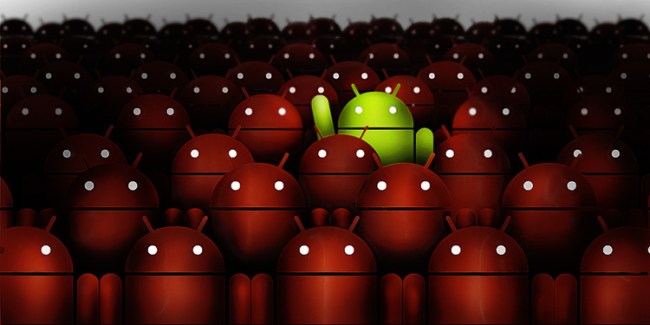
Times are changing for Android manufacturers. After taking heat for the increasing fragmentation between Android devices, Google has begun stepping up in 2011 and requiring manufacturers to start adhering to a stricter code of conduct. In response, “a dozen executives working at key companies in the Android ecosystem,” have been complaining to Business Week and the Justice Department.
Here’s what’s happening:
- Chip and device manufacturers that hope to use Google services and access the Android Market must comply with Google’s rules.
- Android licensees must now adhere to “non-fragmentation clauses,” meaning that modifications to Android handset hardware or user interface (HTC Sense, Motorola Blur, TouchWiz, etc) must be approved by Google’s Android guru, Andy Rubin. This includes monitoring and approval of new app partners for built-in software.
- Google has specifically asked to review tweaks and code from Facebook, which is creating its own Android UI for a Facebook phone of some kind.
- Google has tried to hold up the release of Verizon Android devices that use Microsoft’s Bing search engine.
- Google is playing favorites (more than before), delaying the open source release of Android Honeycomb, but letting choice manufacturers like Motorola, Samsung, and LG access so they can get a head start on the competition. As a result, out of the loop manufacturers like Acer and Dell are being pushed months behind the competition.
- Google may standardize Android on ARM chipsets, leaving Intel in the dust.
Is this right?
Sometimes we forget that Google is a business. We want it to be this pure force for good and openness. While it may have had pure intentions with Android, manufacturers have been taking advantage of Google’s lax nature for the last three years. Unlike Windows and every other platform, Android has always been, and still is a free platform to use. Google gave all of the major manufacturers the ability to compete with Apple’s iPhone at a time when none of them could. This is why Android’s marketshare has sprung from single digits to more than 40 percent in the last year or so.
More control please
Unlike every other operating system, Google has also given handset manufacturers an unprecedented level of control to customize and modify Android, and they have, often to the detriment of the Android experience itself. It can be a very frustrating thing for a user if they buy an Android phone by HTC and learn how to do things one way, then buy a Motorola handset and can’t find many basic menus or functions that they got used to on their last phone.
PCs and Macs never had this problem, and with Windows Phone, Microsoft laid out strict (but fair) requirements on all handset manufacturers, requiring 100 percent compliance. While HTC has created an entire UI experience called Sense on top of Android, its Windows Phone devices are identical to all other manufacturers except for a single “HTC Hub” where their custom software can lie. Time will tell which model is better, but it’s clear that Google needed to do something. In fact, it may not be doing enough.
Here’s what Google should do:
- Require handset manufacturers using Google services to update their handsets in a timely fashion during their lifecycle (one to two years from release). Google releases a new version of Android every six months or so. To maintain a consistent experience, It is important that Google get as many handsets on the new version as possible. If manufacturers choose to modify Android, they must be able to update their custom UI within a few months and issue the update. Or perhaps make more parts of Android off limits, so that updates can occur without affecting custom UI.
- Get updates out of the hands of the carriers. We’ve been railing on Windows Phone for relying on carriers for updates but Android is no better. Somehow, Google needs to take control of Android updates. It’s bad enough that handset manufacturers are involved in Android updates, involving wireless carriers is just asking for trouble. Neither manufacturers or carriers have much incentive to issue updates. Even if it involves hooking my phone to a PC, there should be a way to get relevant updates when they are issued.
- Make the stock version of Android more attractive and with better features. It is hard work to make an operating system, but if Google took some time to ensure that the stock version of Android had the kind of flair HTC adds with its Sense UI, then all manufacturers would benefit. If there weren’t so many obvious ways to improve Android visually, perhaps manufacturers wouldn’t need to do so. Gingerbread and Honeycomb have been steps in the right direction, but there’s no reason why the standard version of Android can’t look as good as any custom version. Get cracking, Google.
Stop playing favorites
While I have defend some of Google’s actions, the company should take a cue from Microsoft and treat all major venders equally. It’s fine to keep creating new “Nexus” devices that show off the power of a new Android version, but it looks bad when partners like Motorola are allowed to release tablets and phones with new software months before the competition can even look at it. That’s not open, and it’s not good.


